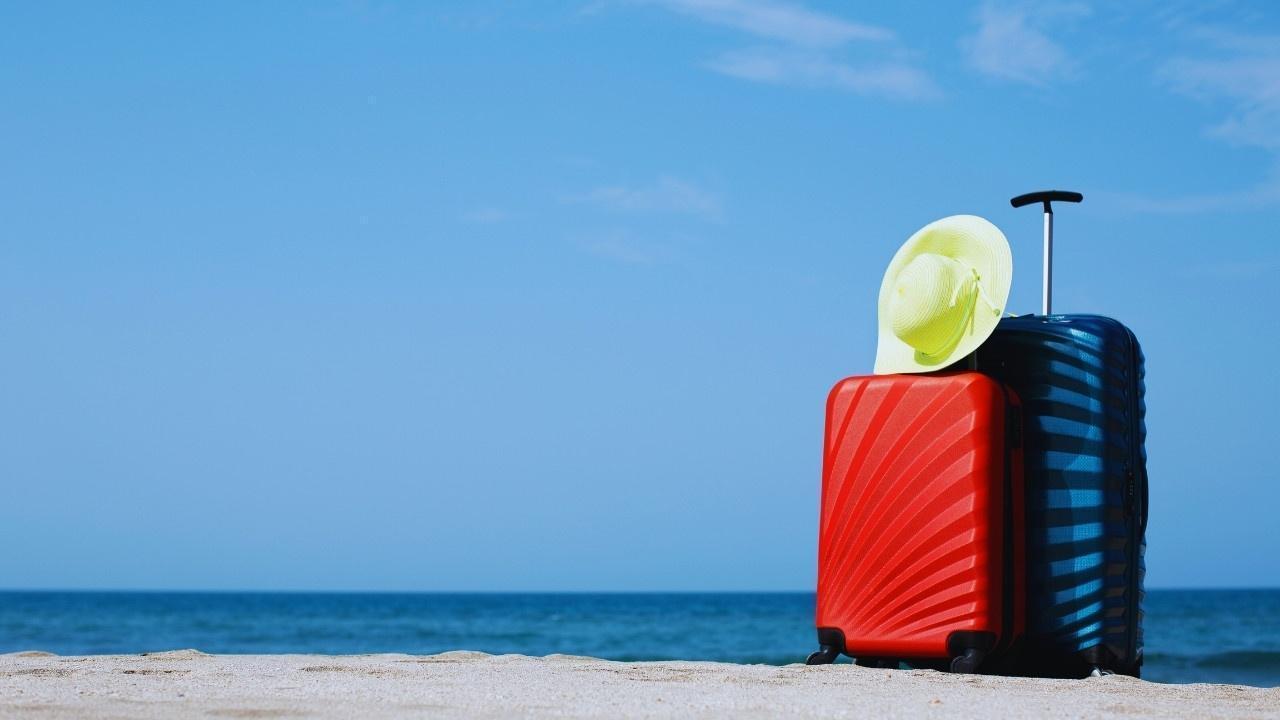
Join 10k+ people to get notified about new posts, news and tips.
Do not worry we don't spam!

Post by : Anis Farhan
November is emerging as a decisive period for travel, driven less by traditional year‑end tourism and more by cultural, religious and community festivals. Travellers are choosing festival experiences, short weekend escapes and offbeat city visits, prompting a redistribution of visitor flows toward secondary cities and regional hubs. Transport providers, hoteliers and local services are recalibrating to meet this changing demand.
The key change this month is not only higher visitor numbers but a different geography of demand: which places are drawing crowds, how people are travelling (short breaks, regional transfers, event‑linked itineraries) and who benefits from this so‑called “festival ripple.” Recognising these trends helps both travellers and industry stakeholders plan smarter journeys and resource allocations.
Festivals have always generated travel spikes, yet the profile of those spikes is shifting. Rather than concentrating solely on major pilgrimage sites or capital cities, travellers now exploit greater weekend flexibility, improved regional links and social media exposure. The result:
Smaller towns hosting festivals draw visitors who might previously have remained nearby.
Celebrate‑and‑stay behaviours lead to short holiday extensions around event dates.
Demand rises across regional transport — roads, local rail and minor airports — not only at national hubs.
Recent domestic datasets show double‑digit increases in passenger volumes during festival windows and the deployment of extra rail and coach services. In short, visitor flows are spreading out rather than concentrating.
Below are several cities and areas that typically register stronger demand in November as festival calendars start to dominate travel decisions:
Pushkar’s camel fair — a blend of livestock trading, folk culture and local celebrations — peaks in November. Cooler desert days, craft bazaars and a distinct festival atmosphere attract travellers seeking authentic, less conventional experiences, lifting tourist numbers versus previous seasons.
Ujjain’s spiritual calendar draws pilgrims and visitors during festival months, increasing stays in homestays and guesthouses. Local transport and hospitality providers are scaling operations and accelerating upgrades to accommodate higher footfall.
Clear skies and crisp late‑autumn weather make hill towns like Darjeeling attractive for short breaks adjacent to festival periods. While not primarily a festival hub, its seasonal appeal makes it a popular alternative when lowland destinations are crowded.
The Rann transforms into a cultural stage in the winter months, with folk performances and spectacular night‑time views under the moon. November marks the beginning of this season, drawing visitors keen on photogenic, culturally rich experiences.
Cities like Indore and Bhopal and nearby pilgrimage circuits serve as staging points during festival peaks. These urban centres function as accommodation and service hubs, seeing increases in bookings and transport usage as visitors move through festival routes.
Festival‑driven surges test the capacity of trains, buses and regional air services. Operators often add special trains, adjust coach frequencies and scale airport operations, forcing travellers and planners to factor in variable availability and service constraints.
As demand rises in less typical tourist towns, hotel and homestay inventories tighten. Premium options can command higher rates while budget stays fill quickly. Early booking and flexible dates remain the most effective ways for travellers to manage costs and access.
Festival tourism channels spending to local enterprises — transport providers, guides, markets and eateries. However, rapid visitor growth exposes infrastructure gaps, so cities must balance economic gains with measures to protect heritage and local life.
Rather than all roads leading to major metros, travellers increasingly opt for shorter regional hops and lesser‑known circuits. This redistribution helps ease congestion at classic hotspots and supports a more diversified tourism footprint.
Even small venues fill fast during festival season. Book accommodation, transport and popular experiences ahead to avoid last‑minute shortages and premium pricing.
Regional airports, secondary rail lines and intercity buses may offer better seats and pricing than routes into major centres. Review local connectivity if your destination is off the main tourist track.
Arriving before or leaving after the main festival day can reduce costs and improve the experience. Consider staying in a nearby city and commuting to the event to avoid peak crowding.
Expect premium fares and busy local services during festival windows. Pack flexibility into your plans and have contingency options for transport and accommodation.
Festivals can strain community resources. Choose responsible stays, limit congestion at sensitive sites and respect local customs to help preserve the destination for future visitors.
Beyond the headline event, seek out local crafts, village excursions and nature walks. Many of the cities listed provide rich, complementary experiences that deepen the trip.
Recent reports illustrate festival impacts on travel behaviour:
Bus ticket sales in one state climbed by over 30% during a festival interval, with strong demand for air‑conditioned and sleeper coaches.
Airfares jumped on several routes ahead of major events, with prices in some cases nearly doubling as travellers secured seats weeks earlier.
Homestay occupancy and local infrastructure investment rose in central pilgrimage regions, highlighting the pull of smaller cities into the festival tourism economy.
These signals point to not only increased volumes but also a notable shift in destination choice and transport preferences.
Cities that stand to gain should coordinate transport management, ensure accommodation readiness, promote festival timing to target audiences and enhance visitor experiences outside the main event dates. Festival calendars now serve as critical planning tools.
Boutique properties and homestays that emphasise local culture can capture demand by packaging festival‑linked experiences. Pricing should balance peak yields with broader accessibility to sustain occupancy.
Rail, coach and regional air operators should anticipate spikes, add capacity where feasible, adopt dynamic pricing and provide clear, timely information. Awareness of festival schedules can provide an operational edge.
Writers and editors should highlight emerging festival destinations and practical planning advice — from less crowded alternatives to timing tips. Timely, SEO‑aware guides about festival travel in November will meet growing reader interest.
November travel is evolving beyond simply seeking pleasant weather or end‑of‑year breaks. Festivals are actively redirecting attention to culturally rich, smaller and regional destinations, reshaping how people travel and how cities manage visitors. For travellers, this trend offers meaningful, often more authentic experiences. For destinations and service providers, it presents an opportunity to diversify tourism offerings and capture new demand windows.
As the landscape changes, think beyond familiar hotspots: shorter regional hops and culturally focused stays are becoming central to festival season travel. If you are preparing a November trip, consult local calendars, plan ahead and be open to exploring cities where festival energy and travel opportunity intersect.
This article is for informational and editorial purposes only and does not constitute professional travel advice. Travel conditions, availability, pricing and festival schedules can vary. Readers should verify current local guidelines, transport infrastructure and accommodation status before making bookings.










Zohran Mamdani Clinches NYC Mayoral Seat as Victory Speech Blends Politics and Bollywood
Zohran Mamdani won New York City's mayoral race, becoming the city's first Muslim and South Asian ma

India Wins First Women’s World Cup 2025 Title
India lifts its maiden Women’s World Cup 2025 title! Harmanpreet Kaur’s team stuns South Africa in a

Manuel Frederick, 1972 Olympic Bronze Goalkeeper, Dies at 78
Manuel Frederick, a member of India’s 1972 Olympic bronze hockey team, has died in Bengaluru at 78 a

Muhammad Hamza Raja Wins IFBB Pro Card Puts Pakistan & UAE on Global Stage
Pakistani bodybuilder Muhammad Hamza Raja earns IFBB Pro Card in Czech Republic, showcasing Dubai’s

Shreyas Iyer’s Recovery Underway After Spleen Laceration in Sydney ODI
Shreyas Iyer is recovering after a spleen laceration sustained while taking a catch in the Sydney OD

Qatar Ready to Host FIFA U-17 World Cup 2025 in Aspire
Qatar confirms full readiness to host the FIFA U-17 World Cup 2025 from November 3–27, with world-cl